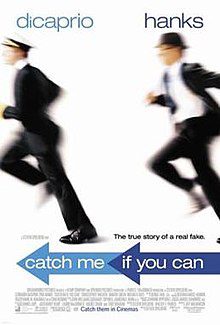Podcast: Play in new window | Download (Duration: 45:53 — 63.1MB)
As I stood in the LA office of the FBI’s bank robbery coordinator,
veteran FBI Agent Bill Rehder pointed to a wall plastered with bank surveillance photos.
Rehder ticked off the nicknames of a rogue’s gallery of serial bank robbers.
The baby bandits, the big nose bandit, the big ears bandit, the skunk bandit, the ponytail bandit, the grandpa bandit.
Hello, I’m Robert Riggs with a story from inside the crime scene tape at what was the bank robbery capital of the world in the 1980s and 90s. Los Angeles, California.
I met Bill Rehder in 1997 while doing a series of stories about the upsurge in violent bank robberies across the United States.
Bank tellers were being shot, and customers were taken hostage. California’s takeover bank robbery epidemic was spreading across the nation.
Rehder, who spent most of his 33 years with the FBI on the bank robbery squad, dispatched agents to the scenes of robberies. Twenty-eight in one day alone.
After he retired, Rehder wrote a book about his favorite cases titled Where the Money Is: True Tales From the Bank Robbery Capital of the World.
He also provided technical advice for Leonardo DiCaprio in the movie Catch Me If You Can. Rehder advised how actor Tom Hanks should dress and talk like an FBI agent did in the 1960s and 70s. And what a bullpen looked like back in those days when button-down FBI agents worked together in an open office at their desks.
Rehder assigned wanted bank robbers colorful nicknames based on their appearance, clothing, MO, or unusual habits.
For example, the Spiderman Bandit didn’t scale walls. Rather, spider web-like tattoos on his forearms earned him the nickname.
The colorful and quirky nicknames helped generate more news coverage and tips by creating a picture in people’s minds.
Rehder told me that the tradition of assigning memorable nicknames dated back to Jack The Ripper, who killed and mutilated prostitutes in late 19th Century London.
As Rehder and I scanned the wall, he stopped dead on a surveillance photo of two bank robbers clad head to toe in black body armor and armed with assault rifles.
Rehder dubbed the pair “The Hi Incident Bandits.” A few months earlier, they had shot up two banks in the San Fernando Valley.
With an ominous foreshadowing, Rehder told me they were not just dressed for a bank robbery but for a confrontation.
Indeed a month later, the two heavily armed gunmen dubbed “The Hi Incident Bandits” by Rehder shot it out with police after robbing a bank in North Hollywood.
The running gun battle lasted 44 minutes. The pair were armed with thousands of rounds of ammunition and fully automatic assault rifles.
Wounded officers lay bleeding, pinned down. Armed with 9mm pistols and 38 caliber revolvers, the police were no match.
An order crackled across police radio transmissions to shoot for the head as officers realized their rounds were bouncing off the robber’s body armor.
In the end, both robbers were killed, and twelve police officers and eight bystanders were wounded.
It was a case of life imitating art.
Two years earlier, the movie Heat featured a similar paramilitary-style robbery and shootout in LA.
Written and directed by Michael Mann, Heat is a classic American crime film. It pits Al Pacino as an LAPD detective against Robert De Niro, who plays a career thief and the gang’s leader.
Mann has teamed up with award-winning author Meg Gardiner to write a suspenseful novel titled Heat 2.
It tells the character’s back story in the years before and after the iconic movie.
Meg Gardiner is my guest on this episode of True Crime Reporter®.
She is a New York Times bestselling author of sixteen thrillers. Her previous novel, The Dark Corners of the Night, features FBI profiler Caitlin Hendrix, which is in development by Amazon Studios for a television series.
Here’s my interview with Meg Gardiner. (Guard-Ner)
RIGGS TAG
Bank heists were once the quintessential American crime immortalized with the daring exploits of Bonnie and Clyde, John Dillinger, and Pretty Boy Floyd.
In the wake of high-tech surveillance cameras that capture sharp images and hardened cages for tellers, most criminals today have decided bank robbery no longer pays.
The FBI even released a Bank Robbers app so the public could scroll through the photos of suspects to help identify them.
As a result, the bank robbery rate has dramatically dropped and gone are the days when you could get away with hundreds of thousands of dollars.
It’s now largely a crime of the desperate.
But it will continue to grip the public imagination in books like Heat 2 by Meg Gardiner and Michael Mann.
I want to remind our listeners to sign up for our true crime community on our website at True Crime Reporter® dot com. There’s a red box on every page where you can sign up.
Here are links to my stories about the bank robbery shootouts in Los Angeles.
FOLLOW the True Crime Reporter® Podcast
SIGN UP FOR my True Crime Newsletter
THANK YOU FOR THE FIVE-STAR REVIEWS ON APPLE Please leave one – it really helps.
TELL ME about a STORY OR SUBJECT that you want to hear more about





Leave a Reply